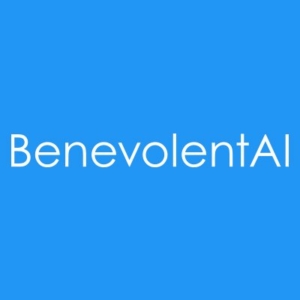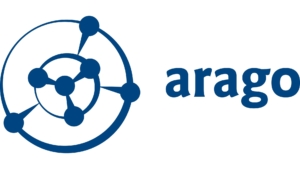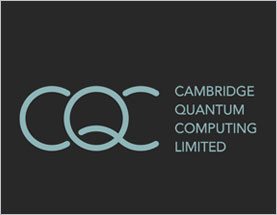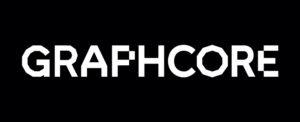Europe’s Top Investment Deals in 2020 and Q1 2021
News of an investment deal is a reason for the entire ecosystem to celebrate. In this article, we listed top investment deals and valuations.
News of an investment deal is a reason for the entire ecosystem to celebrate. In this article, we listed top investment deals and valuations.
The new generation of lawyers has high expectations about what technology can do for them. With life cycles of innovation getting constantly shorter, we are surrounded by new disruptive technologies and this is not different in the legal world. According to research from Thomson Reuters Legal, 579 “lawtech” patents were filed worldwide in 2016, up from just 99 in 2012. The expansion in Legal-Startups and patent filings are driven by interest for quicker and less expensive approaches to legal services.
In honor of the Legal Tech Conference taking place in Vienna today, we are highlighting 6 legaltech trends, which could make a big impact in the work of lawyers as well as the experience of their clients.
The most interesting case of a robotic lawyer is ROSS, an artificially intelligent legal research assistant built on IBM’s Watson supercomputer. Capable of handling ‘natural language’ legal questions, for which ROSS will return cited legal answers and topical readings from legislation to case law and secondary sources instantly, many legal heavyweights in the US are already using it, such as Latham & Watkins LLP.
Legal research is very costly for law firms. Therefore, advanced analytics programs, some of which use artificial intelligence and machine learning technology, are already proving to be invaluable for law firms, which handle and generate loads of documents. Most legaltech startups to date have focused on making this procedure and all this material more manageable.
Companies such as Justis and Ravel Law (which was acquired by Lexis Nexis) are already using advanced analytical algorithms to make the research task more manageable.
Big data has already caused a big impact in various industries, and it is not different for the legal world. Many tools are already helping improve the search process and give lawyers data-driven tools to research through millions of documents. Using big data can also lead to a greater degree of efficiency and transparency, which everyone will benefit from. Reducing the time it takes for lawyers to complete research and casework, will lead to improved access to the justice system.
[sociallocker id=”11091″]
Many firms are already using packaged legal solutions instead of custom-tailored solutions for every client. For example, Wevorce users can have access for around USD 800 to a pre-packaged divorce plan that suits their needs together with pre-filled divorce forms. We can also find startups such as Bright Advise, where users only need to submit a question and a professional will be in touch with them shortly after.
Writing legal documents, together with legal research, are the tasks that most likely cause a strain on lawyer’s finances and time. Some startups are already automating those tasks using various programs or services. Many services like Ironclad may help create, fill, and manage contracts in an effective way.
The search for new business models or at least for the possibility of expanding their own business model will also play a greater role in the future for lawyers. An example would be to use data and smart algorithms to predict what a client might need and actively approach it.
All those trends, while impressive and likely to ease the workload and research of many lawyers, are still far from being an everyday reality. Legal advice is still a very personal job, clients often seek reassurance in face-to-face advice. The reality of an artificial intelligence lawyer might have to wait some decades but today the increasing presence of automated processes will start replacing associate-level lawyers and help firms save money and time managing documents and handling research.
[/sociallocker]
If you are interested in getting to know more about this topic and how we can help your firm be more efficient, please contact our Partner and Head of Legal Alexander Rapatz.
In cooperation with Venionaire Capital, DerBrutkasten.com publishes a four-part article series on the subject of artificial intelligence. We are concentrating on the economic aspects of how AI works to the current research and the future of artificial intelligence.
The fourth and last article will concentrate on how the artificial intelligence will turn out in the future.
According to a quote from Stephen Hawking in The Guardian, Artificial Intelligence will be “either the best, or the worst thing, ever to happen to humanity”. The growing computer performance and Big Data enable machines to become even smarter. In an open letter, therefore, numerous industry leaders, such as Elon Musk or Hawking, call for the prevention of artificial intelligence and the control of the systems.
Musk believes that AI could become an existential threat to people and emphasized the need for legal requirements. Other AI skeptics are worried about the labor market. AI, according to the apprehension, will at least provide a new wave of mass unemployment in the short to medium term.
Joe Lobo, “chief botmaster” at the Startup Inbenta, has a more positive idea of the future of work and artificial intelligence. In a Forbes podcast he explained how technologies create new jobs and people can use their skills for new opportunities. So far, the development showed that AI systems complement human workers more than replace them. AI skeptics and enthusiasts, however, agree that jobs will change and new forms of employment will arise.
Whether advocates or adversaries, it is certain, in AI will be further invested and researched. In the end it is in our hands whether we end up with a terminator or a Wall-E.
However, to an artificial superintelligence it is in any case still a long way, as we described it in the second part of our series. In the third part, we also showed that the research and development of artificial intelligence was not a linear process, but had to repeatedly record ascensions and declines. The economic impacts of AI, which we dealt with in the first part, are equally interesting for start-ups and early-stage investors.
For the whole article click here.
The marketplace for artificial intelligence (AI) technologies is thriving. Beyond the hype and the intensive media attention, the numerous start-ups and internet companies racing to acquire them, we can observe that private companies are increasing their investment and adoption to these technologies.
To complement the article series on artificial intelligence we would like to outline the 15 biggest deals on artificial intelligence start-ups in Europe.
[sociallocker id=”10980″]
1. Kreditech
![]()
Location: Hamburg, Germany
Funding Amount: USD 162.590.000
Webpage: kreditech.com
Provider of a lending as a service (Laas) based credit-scoring platform designed to improve financial freedom for the under-banked by the use of technology. The company’s lending as a service (Laas) based credit-scoring platform identifies and scores individuals online, decides and instantly pays out loans, based on 15,000 data points, providing banking products (instalment loans, microloans, credit cards, electronic wallets) to customers in emerging markets.
2. BenevolentAI

Location: London, United Kingdom
Funding Amount: UDS 100.000.000
Webpage: benevolent.ai
Provider of artificial intelligence technology intended to transform the process of pharmaceutical research and development. The company’s self-learning artificial intelligence and machine learning capabilities focuses on the disease areas of inflammation, neurodegeneration, orphan diseases and rare cancers as well as Judgment Augmented Cognition System (JACS), enabling human health, bio science and information technology sectors to analyse vast quantities of scientific information for the advancement of scientific discovery and applying it to real world problems.
3. Alteryx
![]()
Location: Broomfield, Colorado
Funding Amount: USD 85.000.000
Webpage: alteryx.com
Alteryx is the leader in self-service data analytics
4. Blue Yonder

Location: Karlsruhe, Germany
Funding Amount: USD 75.000.000
Webpage: blue-yonder.com
Provider of Big Data analytics and predictive applications. The company offers a cloud-based scalable platform with machine-learning algorithms. The enterprise’s platform automates decision-making in real time and supplies precise forecasts. It is also used in dynamic pricing and in customer analyses.
5. Darktrace

Location: London, United Kingdom
Funding Amount: USD 64.000.000
Webpage: darktrace.com
Provider of cyber threat defense systems designed to detect and respond to previously unidentified threats. The company’s cyber threat defense systems include detecting emerging cyber-threats and to proactively defend against in-progress cyber-attacks, enabling clients to defend against evolving threats that bypass all other systems.
6. Arago

Location: Frankfurt am Main, Germany
Funding Amount: USD 55.000.000
Webpage: arago.co
Provider of information technology automation services. The company develops artificial intelligence software for banking and telecommunication sectors. Its products include AutoPilot, CloudPilot, DocMe, BuildMe and MARS-O-matic and its services include WebFarm and CloudFarm.
7. Blippar

Location: India, Turkey, United States, United Kingdom
Funding Amount: USD 54.000.000
Webpage: blippar.com
Provider of augmented reality software for smartphones. The company offers a platform that enables users to turn images into interactive Web experiences, through image-recognition technology.
8. Cambridge Quantum Computing

Location: Cambridge, United Kingdom
Funding Amount: USD 50.000.000
Webpage: cambridgequantum.com
Provider of tools for the commercialization of quantum computers. The company provides cryptography, financial, medicinal, biotech and big data services.
9. Quid

Location: San Francisco, United States of America
Funding Amount: USD 39.000.000
Webpage: quid.com
Provider of a visualization platform designed to offer text-based data analysis. The company’s visualization platform combines search, premium data and high-performance algorithms from news articles, blog posts, company profiles and patents to create visualizations of markets, trends and cultural phenomena, enabling businesses to analyze investment trends, gain competitive intelligence, map innovation as well as make decisions that matter.
10. Rapid Miner

Location: Boston, Massachusetts
Funding Amount: USD 36.000.000
Webpage: rapidminer.com
Provider of data science platform designed to offer predictive analytics built on an open stack. The company’s data science platform allows to build software for real data science, fast and simple, unifies data preperation, machine learning and model deployment, enabling companies to drive revenue, reduce costs and avoid risks.
11. Withings

Location: Issy-les-Moulineaux, France
Funding Amount: USD 33.830.000
Webpage: withings.com
Developer of digital health and wellness smart devices and applications. The company offers software and devices that enable people to monitor and track their personal health data.
12. Nanigans
Location: Boston, Massachusetts
Funding Amount: USD 32.850.000
Developer of an advertising automation software. The company’s online platform offers programmatic media buying, predictive revenue optimization and real-time business intelligence.
13. Graphcore

Location: London, United Kingdom
Funding Amount: USD 30.000.000
Webpage: graphcore.ai
Developer of a processor designed to accelerate machine intelligence learning. The company’s intelligence processing unit emphasizes massively parallel, low-precision floating-point computing and provides higher compute density than other solutions, and the C++ programming framework provides seamless interface to standard machine learning frameworks, with simple integration for existing applications written for Tensorflow, enabling researchers to explore machine intelligences across a much broader front than current solutions.
14. Pyramid Analytics

Location: Amsterdam, The Netherlands
Funding Amount: USD 30.000.000
Webpage: pyramidanalytics.com
Provider of a business intelligence platform designed to simplify the access to information to help organizations optimize their business. The company’s business intelligence platform provides delivers intuitive enterprise level Business Intelligence through an integrated, scalable dashboard and analytic application for all types of business users, providing them with modules that can be accessed through a single, web-based interface.
15. Celonis

Location: New York, United States of America
Funding Amount: USD 27.500.000
Webpage: celonis.com
Celonis offers the most advanced Process Mining tool for analysing & visualizing business processes.
As we might have seen in this article, Europe has a fast growing Artificial Intelligence Industry most of them being in the data analytics market. AI is transforming every industry and process, and Europe is leading the way.
[/sociallocker]
In cooperation with Venionaire Capital, DerBrutkasten.com publishes a four-part article series on the subject of artificial intelligence. We are concentrating on the economic aspects of how AI works to the current research and the future of artificial intelligence.
In the first article we described “Artificial Intelligence (AI)” as the ability of a machine to learn and adapt from its own experience. The second article was about the basis concept of AI and in the third part, we will provide an overview of research, trends and leading companies in the field.
Artificial intelligence is often seen as a new world conquered just by brave pioneers from Silicon Valley. In reality, however, the subject had a lot of ups and downs. The breakthrough seemed only a matter of time, but the researchers underestimated the problem that words can have different meanings in different contexts. The US Government cancelled the financing and this this period was referred to as “AI Winter” in analogy to the concept of “nuclear winter”.
Historically, there have always been such drought periods. The result of financial incidences were fewer research activities. Over and over again there were deep and then high phases (“AI Sommer”).
After a difficult situation in the early 1990s, the AI industry was finally recovering in the 2000s. The upturn was supported not so much by governments but by tech companies such as Google, Facebook, Apple, Amazon, Microsoft or the Chinese company Baidu. The basis for the rapidly growing commercial interest are the computer systems that now enable the broad use of AI technologies for the first time.
The search engine giant Google is one of the leading companies when it comes to the topic of artificial intelligence. The main focus of their research (see research.google.com) is Machine Learning, Natural Language Understanding, the entire health care system, the perceptive abilities of machines, robotics and, interestingly, the creation of music and art. Thereby “deep learning” plays a very important role, for example Google’s Alpha Go, which clearly defeated the professional Go player Fan Hui and later Lee Sedol.
The question that is important to investors is, of course, whether the high phase is only a hype or sustainable. In contrast to the past, AI is already being used in everyday life.
For the whole article click here.
In cooperation with Venionaire Capital, DerBrutkasten.com publishes a four-part article series on the subject of artificial intelligence. We are concentrating on the economic aspects of how AI works to the current research and the future of artificial intelligence.
In the first article we described “Artificial Intelligence (AI)” as the ability of a machine to learn and adapt from its own experience. In this article we want to get deeper in the matter. AI consists of diverse technologies that are the result of a combination of three elements: comprehend, sense and act.
Language Processing and knowledge representation are important for comprehend. Natural Language Processing (NLP) combines technologies that are able to understand and generate speech in spoken or written form. Knowledge representation helps to communicate knowledge and facilitate subsequent decision-making, for example digital assistants.
Sense includes machine vision, voice recognition and further processing in sensors. This makes it possible to capture, identify, analyze and process the input information from cameras, microphones or other sensors.
Once information is collected through comprehending and sense, the logical third step is action. This is mainly used in industrial robotics, as Amazons show impressively.
These are the three pillars of the artificial intelligence According to Stuart Russel and Peter Norvig machines must also have specific abilities to act as a human being. Known in this context is the Turing Test from 1950, where a human questioner talkes with two unknown conversation partners. One of them is a person, the other one is a machine. If the questioner does not suceed in telling which of them is the machine, the machine wins. This test is now more than half a century old and we are still at the beginning of the development.
For the whole article click here.
In cooperation with Venionaire Capital, DerBrutkasten.com publishes a four-part article series on the subject of artificial intelligence. We are concentrating on the economic aspects of how AI works to the current research and the future of artificial intelligence.
The first part shows the economic growth through artificial intelligence. While most people still associate the terminator with artificial intelligence, it has long become a key technology. Also Austrian Startups in cooperation with the ÖFAI (Austrian Research Institute for Artificial Intelligence) contribute to this growth with Voicebots and Chatbots such as Yodel.io.
The International Data Corporation sees the US market potential for artificial intelligence in three years at approximately 34 billion euros and the contribution to the economic growth only in Germany will be 1.6%. This is an important argument for investors and caused 2016 investments in the amount of 5 billion Euros. Although there is a clear distance between the USA and Europe, the number of completed deals in Europe is rising. For example the largest financing round in 2017 concluded the German company Kreditech with about 138 billion Euros. The amounts of Austrian startups like FRUX, Kiwi Security or Cortical.io are clearly smaller. Sales will increase enormously between 2016 and 2025 even if there are warnings about the current development for example from Elon Musk.
For the whole article click here.
After 2015 has brought us plenty in terms of innovation and investing activity within the area of financial technology, the developments in the year behind us did not pick up such a fast pace. In 2015, we have witnessed the strong emergence of innovative financial services delivered through a blend of various channels, combining various platforms and technological tools. Besides, the terms such as blockchain, API or POS became closer to the customer and in a way part of a daily conversation. These innovations have been fuelled by huge investment injection of $46.7 billion in value on global level. However, according to KPMG’s analysis of 2016, the FinTech market shows signs of slowing down. The decrease of almost 50% brought the investment value for a total of $24.7 billion.
Total global investment in Fintech companies, 2010 – 2016
*Source:Pulse of Fintech Q4 ’16, Global Analysis of Investment in Fintech, KPMG International (data provided by Pitchbook), February 2017.
Investment by FinTech Segments
Banking/Lending has been the dominant segment when it comes to the number of companies raising funds (29% of companies that raised funds belonged to this segment).
Fintech Segments by funds raised 2016
*Source:LTP, Global Fintech Funding in 2016, January 2017.
However, the segment of Payments/Loyalty/E-Commerce is the one where the total funds raised value is highest. Companies categorized in this market segment have raised 39% of total funds raised by the entire Fintech industry in 2016.
M&A, PE, IPOs and VC deals
When analyzing the structure of financing deals, the increase in venture capital activity is noticeable in comparison to 2015. According to KPMG, M&A and PE FinTech deals dropped considerably in 2016, while the venture capital investments reached $13,5 billion, even more than $12,7 billion in 2015. The increase in VC investments occurred despite the decrease in number of deals.
*Source:Pulse of Fintech Q4 ’16, Global Analysis of Investment in Fintech, KPMG International (data provided by Pitchbook), February 2017.
The reasons for such a boost are mostly three gigantic financing rounds in China. The funding round to Ant Financial that occurred in second quarter last year was $4,5 billion heavy. Besides Ant, two more historic financing rounds, each over $1bn, significantly increased investment numbers in China: Luf ax.com – $1,2 billion and JD finance – $1 billion.
After these three giant investment shots, China outpaced the US for the first time with $7,7 billion in total value of deals (28 in total), with an 84% increase in comparison to 2015 ($4,2 billion).
Except Markit’s $5,5 billion merger with HIS, there were no significant IPOs in 2016, either. The expectations are that the trend will pick up in 2017, as we have more mature companies in the market. The most active FinTech investor was fund and accelerator 500 Startups with 39 investments. In June, they announced raising a $25million separate Fintech fund for investing in early stage companies globally.
Key Q4’16 indicators
KPMG states that the last quarter of the year showed some revival of the investing activity. The VC funding increased from $1,9 billion to $2,1 billion between third and fourth quarter of the year, though still not near the previous year’s numbers. On American continent, VC investment revolved around $1,1 billion in Q4 ’16, not deviating too much from the previous year’s results for the same period. In Asia, VC funding jumped to $680 million after a year’s low of $200 million in third quarter. The rebound was mostly driven by a $ 384 million deal in the last quarter. Europe has stayed relatively stable, sitting on $319 million of investments in the industry. This result still remains lower in comparison to the same period in 2015 (around $350 million).
Conclusion
European investment volumes were on decline, what was mostly driven by the political reasons. The turbulent political year gave us Brexit, elections and referendums all across Europe (Italy, Austria, France), directly influencing the stability of financial systems and caution of investors. Similar happened in the US. The elections, as the period of political uncertainty has influenced the investors on the other side of the Atlantic, too.
However, when looking east, political stability in Asian – Pacific region brought totally the opposite – the lack of significant political events and turbulences gave the impression of economic stability. This fact directly reflected on the upward trends in Asian FinTech ecosystem investing activities.
The appetite for investing has certainly not vanished, neither is the appetite for innovating. 2017 is the year that can bring revival in terms of more overall activity in the market and possibly some significant shifts that would include big investment deals and the appearance of some new innovative solutions. There are three major drivers to this possible scenario:
*Sources:
The Pioneers Festival attracts over 2500 attendees, selected startups and investors to Vienna’s Hofburg every year. Now, Pioneers has started a series of smaller events around Europe with a focus on selected topics. Venionaire recently attended the Fintech.Pioneers event in Berlin 16-17th February 2017. Fintech.Pioneers started in a relaxing ambience on Thursday in a former brewery and soon to open as bar location in Berlin. It was great to meet the event’s participants in such a relaxed manner. On Friday the Fintech.Pioneers Bootcamp Day started with full speed in the following format: 3 fintech expert speakers would present briefly on their topic, followed by 4 startup pitches with Q&A aided by Piobot, whom the audience could send their questions to.
The audience was lead through the most important Fintech topics in a very organized manner: the kick-off was given by an introductory session on the disrupting nature of Fintech, with co-founders of Wikifolio Can Ertugrul, Bitcoin.com co-founder Adam Stradling and Augur’s Perry Despeignes. All three speakers stressed how their innovations gave users the power for more transparency, central to the rise of Fintechs.
Then 4 startups pitched on stage: Italian Euklid presented its AI-powered decision making trading algorithm; Bitbond, one of the three finalists, explained how it enabled worldwide small business loans via Bitcoin transfers; Crediwire provides banks with a tool for credit ratings for small businesses and FinTecSystems provides banks with its client’s real-time data for financial transactions. After the first session participants were given a two-hour time slot for meetings, which could be neatly organized through the event’s platform.
In the next session, Adizah Tejani from Token.io explained how the new PSD2 directive (Payment Services Directive to come into effect 2018) – which obligates banks to provide third-party providers access to their customers’ accounts through open APIs – will enable third-parties to build financial services on top of banks’ data and infrastructure. He argued, that through Token.io this could also be an opportunity for banks as they could be effectively led to comply with the new regulation. Alexander Graubner-Müller and Erki Kert from Big Data Scoring both presented their solutions for small business loans. In the second session of the startup pitches, Enterprise Bot presented its white label solution for banks to chat with their customers; Hufsy is a simple accounting system for startups; finalist Telleroo enthusiastically shared how through its payment solution platforms could pay large numbers of vendors and zuper shared how it wants to become a personalized financial advisor to users through comparing different providers and providing users a neat oversight over one’s finances via app. The session ended with a panel discussion on how the retail bank of the future would look like – Maximilian Tayenthal from N26 spoke of a “democratization of financial services”, where customers would receive better services at better prices.
After a short break, fintech investor Marc Bernegger explained how there are several fintech hubs across the continents yet that the European market is an opportunity for Fintechs. In the following session speakers went into how banks and startups could collaborate using the blockchain technology. Digital strategist Axel Apfelbacher, Bruce Pon from Bigchain DB and Joshua Scigala from Vaultoro went on to share their view on how blockchain allowed for entirely new solutions – such as Vaultoro’s bitcoin/gold trading solution – which not only were unthinkable before, but added immense value and transparency for users. In the last startup pitching session we heard about Quantoz’ blockchain based solutions for banks; Blockchain Helix’ blockchain based KYC solution; Plutus’ payment gateweay for bitcoin holders and last but certainly not least as the startup won the best of prize: Bitwala’s solution as the fastest global bank transfers paying with bitcoins and cashing out to debit cards or bank accounts.
What is IoT? Internet of Things is one of the most trending buzzwords in the venture ecosystem. Sometimes people refer to it as “Internet of Everything” or “connected everything”. Although the word is used in all kind of different contexts, people have still difficulties to understand IoT as a whole. We at Venionaire approached this area through our Insight about Internet of Things with the aim to give a complete overview.
[cta id=”9911″ vid=”0″]
Corporates investing in IoT
But not only the venture ecosystem is ignited by it – corporates are as well heavily focusing on it. In fact, Cisco began with operations related to IoT in the early 80s and one of the giants, General Electric, committed themselves (through their subsidy GE Digital) to be a “truly” digital industrial company. IoT is actually easy to describe as a network of physical objects, which are able to communicate, sense or interact with each other. In other words: the connectivity is not limited to PCs and mobile phones anymore, but literally every physical object. These connections occur in different contexts. For example: if you start connecting machines in a manufacturing plant, people will refer to it as Industrial IoT, or if you put sensors on your body to track your health condition, people will refer to it as quantified self (sub category of IoT). These examples give you a glance at the importance of IoT in terms of cross-industry applications.
IoT is igniting the tech industry
The borders between the tech and other industries are blurring and IoT is one of the major drivers. Cisco predicted a total impact of IoT by 2022 in 14.4 Trillion Dollars! The thing is, IoT even goes further. It doesn’t only affect traditional industries as illustrated above – it is igniting the tech industry itself. We all talk about big data, machine learning, cybersecurity or enterprise mobile applications. In fact, IoT is building on these tech-sectors. Just take the case of connecting machine in a manufacturing plant. You will need big data software to analyse the flood of data the machines are producing every second. You will eventually need machine learning algorithms to interpret the data and convert into information. You will need cyber security software to enable safe communication and prevent hackers to achieve control over your plant and eventually you will need a mobile application, so the plant manager is able to interact with the system.
These are just few examples of IoT applications using other tech applications. The key in investing into IoT is to understand the different technological layers of it and at the same time mapping the influence of every layer to the different industries (tech included).
[cta id=”9911″ vid=”0″]
Babenbergerstraße 9/12,
A-1010 Vienna, Austria (EU)
office@venionaire.com
1355 Market St. #488
San Francisco CA 94103
sfo@venionaire.com
122 East 37th Street
First Floor
New York, NY 10016
nyc@venionaire.com
Gable House, 239 Regents Park Road
London N3 3LF
office@venionaire.com
3 rue Gabriel Lippmann
5365 Munsbach
office@venionaire.com
Venionaire Capital exclusively invests through the European Super Angels Club, for more information and application please go to the website. We do not accept direct investment proposals via this website.
